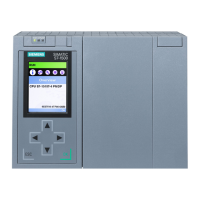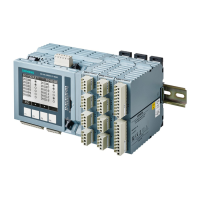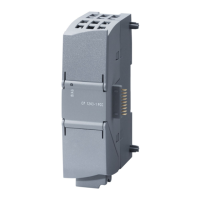4.3.3
Comparison between
COLD RESTART and
WARM RESTART
The following table contains a comparison of the start-up types
COLD RESTART and WARM RESTART..
COLD RESTART WARM RESTART
Manual
triggering:
Mode selector from position STOP to RUN
and reset switch set to RESET position
or
PG function PLC START (COLD
RESTART)
Mode selector from position STOP to
position RUN
or
PG function PLC START (WARM
RESTART)
Automatic
triggering:
Switching on the power supply, when
"AUTOMATIC COLD RESTART after
POWER UP" is entered in DX 0
Switching on the power supply when the
default is entered in DX 0 or no DX 0 exists
System
program
activities:
Set up block address list in DB 0
Delete process image of the inputs
Delete process image of the outputs
Block address list retained in DB 0
Process image of the inputs retained
Process image of the outputs retained
Delete flags, timers and counters
Delete digital/analog I/Os
(each 2 x 128 bytes)
Delete IPC flags (256 bytes)
Delete delayed interrupts and timed jobs
Delete ISTACK/BSTACK
Delete semaphore
Flags, timers and counters retained
IPC flags retained
Delete delayed interrupts,
timed jobs retained
ISTACK/BSTACK retained
Semaphore retained
If DB 1 exists:
write the digital I/Os entered in it into
the PI lists
If DB 1 does not exist:
enter the modules which actually exist
(only digital I/O) into the PI lists
IPC flags are ignored
No entries made from DB 1
Table 4-2 Characteristics of COLD RESTART and WARM RESTART
START-UP Mode
CPU 948 Programming Guide
C79000-G8576-C848-04
4 - 21

